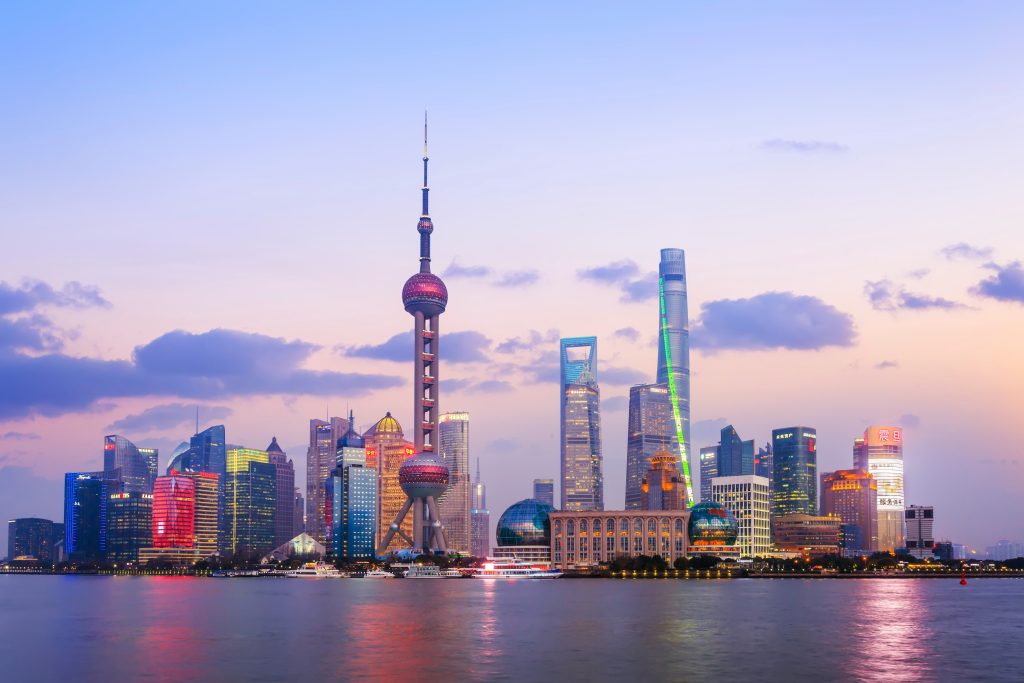
Shanghai Highlight-Shanghai feels like a city that’s always on the move—like it’s daring you to keep up. I’ll never forget my first night there, standing by the Huangpu River, watching the skyline light up with colors that seemed to pulse with the city’s heartbeat. It’s a place where old stone alleys twist past futuristic towers, where you can sip tea in a garden one minute and dodge scooters on a neon-lit street the next. For anyone curious about China’s biggest, boldest metropolis, here’s my take on Shanghai—its geography, people, weather, food, sights, culture, performances, and how to navigate it all. Trust me, you’re in for a ride.
Where It Is and Who Lives There
Shanghai hugs China’s eastern coast, sprawled out where the Yangtze River meets the sea. That spot’s been gold for centuries—a natural port that turned it into a trading powerhouse and a window to the world. The Huangpu River slices it in two: Puxi’s the west side, full of history and charm, while Pudong’s the east, all glass and steel reaching for the clouds. The land’s flat, crisscrossed with waterways that shimmer under the sun—or the rain, depending on the day.
Home to over 24 million people, Shanghai’s a human kaleidoscope. You’ve got locals born and bred, speaking Shanghainese with that soft, lilting twang, mixed with folks from every corner of China chasing dreams here. Then there’s the expat crowd—business types, artists, wanderers—adding their own flavor. Walking through the French Concession, with its tree-lined streets and chic cafes, you’d swear you’re in Europe. But then a noodle cart rolls by, and you’re right back in China. It’s that kind of place—layered, lively, and never quite what you expect.
The Weather: Pick Your Season
Shanghai’s weather has personality. Summers (June to August) hit hard—think 35°C (95°F) days with humidity so thick you’re practically swimming through it. Rain comes fast and heavy too; I’ve been caught in downpours that turned streets into rivers in minutes. Winters (December to February) are milder, usually 5-10°C (40-50°F), but the damp chill sneaks into your bones—pack a scarf.
Spring (March to May) and autumn (September to November) are the goldilocks seasons. Spring’s got cherry blossoms popping along the Bund, and the air’s fresh enough to wander all day. Autumn’s my pick, though—cool, dry, with golden leaves and skies so clear the skyline looks sharper than ever. Bring light layers for those times, breathable gear for summer, and something cozy for winter’s bite.
Food You’ll Dream About
Shanghai’s food is a love letter to flavor—subtle, rich, and downright addictive. Here’s what you can’t miss:
- Xiaolongbao (soup dumplings): These little steamed bundles are Shanghai’s pride—thin skins hiding a burst of hot broth and pork. My first try ended with soup down my shirt (bite the top, sip, then eat!), but they’re worth the learning curve. Jia Jia Tang Bao’s a classic spot, though lines can stretch around the block.
- Shengjianbao: Think xiaolongbao’s rowdy sibling—pan-fried, crispy on the bottom, juicy inside. I grab them from street stalls, hot off the griddle, and they’re gone in seconds.
- Hairy crab: A fall delicacy—steamed, cracked open, and dipped in ginger vinegar. The roe’s this buttery gold that’s messy and glorious. Markets like Tongchuan Road sell them fresh.
- Red-braised pork (hongshaorou): Slow-cooked, melt-in-your-mouth pork with a sweet-salty glaze. It’s comfort food dialed up to eleven.
Street eats are everywhere—crisp scallion pancakes, sticky rice dumplings, even stinky tofu if you’re brave (it’s better than it smells, I swear). For a sit-down meal, Old Jesse does Shanghai classics with flair. Wash it down with a cold Tsingtao beer or jasmine tea—both hit the spot.
Sights That Stick With You
Shanghai’s got places that’ll stop you in your tracks. Start with the Bund—a waterfront strip where 1920s European-style buildings face off against Pudong’s sci-fi skyline. I’ve spent hours there at night, just watching the lights flicker on the river. Cross over to Pudong and hit the Shanghai Tower—at 632 meters, the view from the top makes the city look like a toy set. The Oriental Pearl Radio & TV Tower next door’s funky spheres are a photo must.
For a quieter vibe, Yu Garden is a slice of old China—winding paths, koi ponds, and teahouses tucked among Ming Dynasty pavilions. It’s right by the City God Temple, where you can snack your way through stalls. Nanjing Road is shopping madness—bright signs, crowds, everything from Gucci to trinkets. Then there’s Tianzi Fang, a maze of artsy lanes with galleries and cafes—perfect for getting lost in. I loved Zhujiajiao, too—a water town an hour out, all canals and stone bridges, like Venice with Chinese flair.
Culture: Old Roots, New Beats
Shanghai’s culture is a tug-of-war between yesterday and today. The Shanghai Museum in People’s Square is a treasure chest—bronze Buddhas, jade carvings, calligraphy that’s poetry in ink. But then you’ve got M50, an old factory turned art hub, with gritty walls and bold canvases. I stumbled on a painter there once, brushing wild strokes like he was fighting the canvas—raw and real.
History’s thick in the air—stone lilongs (alley houses) whisper tales of the 1930s, while the French Concession’s villas nod to colonial days. Yet Shanghai’s modern soul shines too—fashionistas strut in Xintiandi, and tech buzzes in Zhangjiang. Tradition lingers in tea shops, where locals sip slowly and gossip fast, and it’s all wrapped in that sharp, stylish edge the city’s famous for.
Performances That Wow
Shanghai’s stage scene is electric. Catch a show at the Shanghai Circus World—acrobats flipping midair, contortionists bending like rubber, all set to pounding music. I saw ERA: Intersection of Time there, and my jaw dropped at least three times. For something classic, the Shanghai Grand Theatre hosts everything from opera to ballet—its glass dome alone is worth the trip.
Jazz is big too—head to Peace Hotel’s Old Jazz Bar, where grizzled musicians play standards from the ‘30s. It’s like stepping into a black-and-white film. If you’re lucky, catch the Shanghai International Arts Festival (October-November)—dance, theater, and street shows take over. Even buskers in the metro tunnels bring it—violinists and pipa players duking it out for your spare change.
Getting Around: Shanghai Hacks
Shanghai’s a beast to navigate, but it’s doable. The metro is your best friend—19 lines, cheap (3-10 yuan), and signs in English. It’s packed at rush hour (7-9 AM, 5-7 PM), so brace yourself. The Maglev train from Pudong Airport is a thrill—430 km/h, 8 minutes to the city edge. I rode it just to say I did.
Taxis start at 14 yuan—handy, but traffic’s a nightmare on rainy days. Didi (China’s Uber) works great if you’ve got a local SIM or Wi-Fi. For a slow roll, ferries cross the Huangpu for 2 yuan—cheap and scenic. I love biking too—grab a Mobike or Ofo from the street, pedal along the Bund or through the Concession. It’s flat, so you won’t break a sweat. Walking’s gold in tight spots like Tianzi Fang—just watch for scooters!
A Few Extra Tips
- Language: English isn’t big outside tourist zones. Pointing and a smile work wonders, or download Pleco for translations.
- Cash: Cards are rare—WeChat Pay or Alipay rule. Keep some yuan handy for stalls.
- When to Go: October’s crisp and lively; April’s blooming and calm.
Shanghai’s a city that grabs you and doesn’t let go—glitzy, gritty, and full of soul. From slurping dumplings to staring down from skyscrapers, it’s a million little moments stitched together. Pack your curiosity and dive in—you won’t come back the same.
